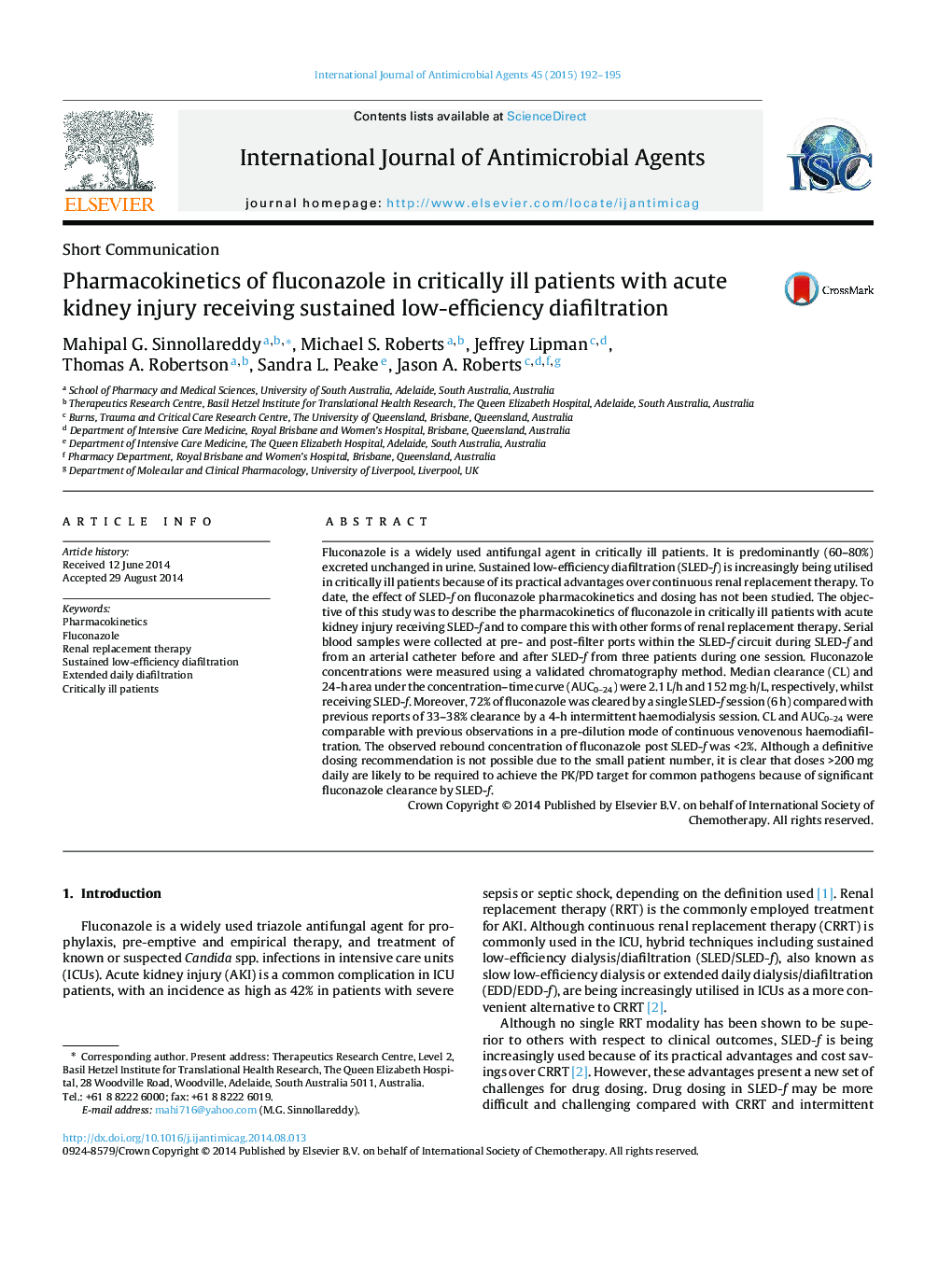| Article ID | Journal | Published Year | Pages | File Type |
|---|---|---|---|---|
| 3358608 | International Journal of Antimicrobial Agents | 2015 | 4 Pages |
Fluconazole is a widely used antifungal agent in critically ill patients. It is predominantly (60–80%) excreted unchanged in urine. Sustained low-efficiency diafiltration (SLED-f) is increasingly being utilised in critically ill patients because of its practical advantages over continuous renal replacement therapy. To date, the effect of SLED-f on fluconazole pharmacokinetics and dosing has not been studied. The objective of this study was to describe the pharmacokinetics of fluconazole in critically ill patients with acute kidney injury receiving SLED-f and to compare this with other forms of renal replacement therapy. Serial blood samples were collected at pre- and post-filter ports within the SLED-f circuit during SLED-f and from an arterial catheter before and after SLED-f from three patients during one session. Fluconazole concentrations were measured using a validated chromatography method. Median clearance (CL) and 24-h area under the concentration–time curve (AUC0–24) were 2.1 L/h and 152 mg·h/L, respectively, whilst receiving SLED-f. Moreover, 72% of fluconazole was cleared by a single SLED-f session (6 h) compared with previous reports of 33–38% clearance by a 4-h intermittent haemodialysis session. CL and AUC0–24 were comparable with previous observations in a pre-dilution mode of continuous venovenous haemodiafiltration. The observed rebound concentration of fluconazole post SLED-f was <2%. Although a definitive dosing recommendation is not possible due to the small patient number, it is clear that doses >200 mg daily are likely to be required to achieve the PK/PD target for common pathogens because of significant fluconazole clearance by SLED-f.
